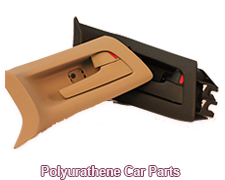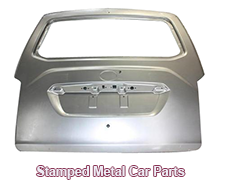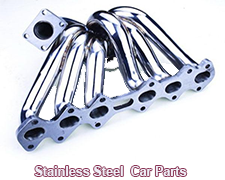
NICKEL STEEL: Describes a form of nickel alloyed with steel to form a heat and corrosion-resistant metal.
NONFERROUS METAL:  Describes a metal such as aluminium, copper or magnesium that contains very little iron and is not liable to rust.
Describes a metal such as aluminium, copper or magnesium that contains very little iron and is not liable to rust.
PIG IRON: Describes the metal produced in blast furnaces that is the raw material used to create or practically all iron and steel products, containing around 3-5 % carbon.
PLASTIC: Describes a type of material comprising organic polymeric substances of considerable molecular weight as an essential ingredient.
PLATE: Describes any flat piece of material.
PLATINUM: Describes a highly valuable heavy, ductile metal as the principal member of the so-called platinum metals. Along with other platinum derivatives, platinum is used as a catalyst in automotive exhaust converters and the construction of breaker points due to the metal’s ability to conduct electricity well and be highly resistant to flame.
POLYCARBONATE (PC): Describes a polyester polymer in which the repeating structural unit in the chain is carbonate-based; used in the production of car bumpers, body and roof panels.
POLYETHYLENE (PE): Describes a polymer, very resistant to chemical attack, used to create fuel, coolant, washer and brake fluid tanks, while low-density polyethene (LDPE) is used to produce plastic film and sheeting.
POLYURETHANE (PUR): Describes a high strength, thermoplastic material known for its resistance to abrasion, used mainly in the production of reaction injection mouldings.
POSTHEATING: Describes the temperature to which metal will reach after a procedure such as cutting, forming or welding has been performed on the metal.
POT METAL: Describes an alloy cast as a single unit that is both inexpensive to make and fragile.
SHEET METAL: Describes metal produced in the form of a thin layer that is bulk pressed to form the car body panels.
SHEET METAL BLANK: Describes an item of flat sheet metal panel before it has been cut and bent, which is used to repair a damaged body section.
SOUND METAL: Describes an intact metal panel that provides a basis for welding repair panels as it has not been substantially weakened by rust.
SPACER WASHER: Describes a sheet of metal or plastic that can be placed between two surfaces to provide a better surface for a fastener.
SPRING STEEL: Describes a form of steel, heat-treated, that can absorb significant deflection and readily return to its original shape.
STAINLESS STEEL: Describes a type of steel that contains a blend of nickel and chromium and is corrosion resistant.
STAMPING: Describes a sheet metal part formed through pressing rolled sheet metal between hardened metal blocks.
STEEL: Describes an alloy of iron containing up to 2% of carbon.
STEEL CASTING: Describes a cast iron permutation to which varying amounts of scrap steel have been added.
STEEL STRUT: Describes steel braces cast into aluminium pistons. Because steel expands slower than aluminium, the steel struts tend to control or minimize the expansion of the piston.
STEP PLATE: < Describes a small step used to climb into a vehicle that sits high on the road.
Describes a small step used to climb into a vehicle that sits high on the road.
STEP: Describes a ledge formed in sheet metal by an edge setter to provide a level mounting and welding surface with the adjacent panel.
ZINC ALLOY: Describes a type of alloy whose principal component is zinc.
BW4


